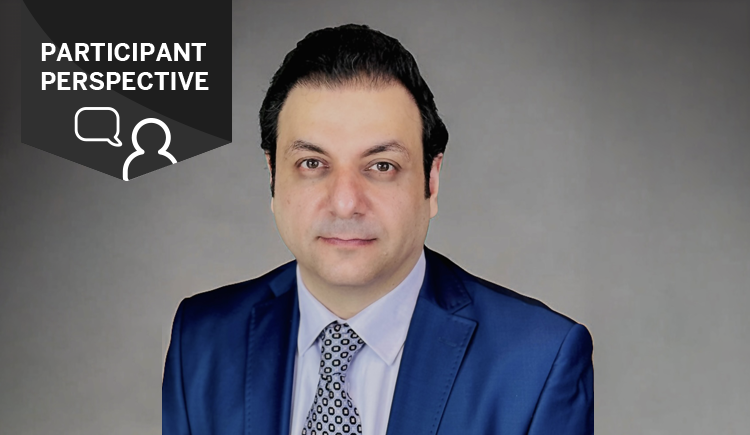
In today’s fast-paced healthcare settings, the potential for errors is always a serious concern. Activated leaders can effectively address these issues by identifying problems and helping to implement quality improvements that will lead to better outcomes.
The U.S. healthcare system has undergone a transformation in recent years. This has come about thanks to a number of factors related to the passage of healthcare reform, including changing payment models, an explosion of data, technological advances, and a growing reliance on patients to make their own decisions when it comes to selecting and paying for their care.
One of the key outcomes of all of this change has been an increasing demand for health systems to implement quality improvement (QI) efforts to prevent errors and ensure that high-quality care and safety measures are in place, according to Anjala V. Tess, M.D., Director of Quality and Safety for Graduate Medical Education at Beth Israel Deaconess Medical Center, and Director of the Fellowship in Patient Safety and Quality at Harvard Medical School.
What is Quality Improvement?
While different organizations have had different ways of describing QI over the years, the website of the Agency for Healthcare Research and Quality (AHRQ) offers a general definition that fits most efforts today: QI is “the framework we use to systematically improve the ways care is delivered to patients.”
This focus of implementing QI on a systemwide level can be traced back to the Institute of Medicine’s 2001 publication, Crossing the Quality Chasm: A New Health System for the 21stCentury. This report attempted to provide a stronger framework for QI initiatives that would address systemic areas of weakness and incorporate greater transparency for health systems in their efforts to ultimately lead to safer healthcare settings.
In the more than a decade and a half that has passed since this report was published, Tess points out that QI has become an increasingly significant component of most health systems’ operations.
“When the Institute of Medicine’s Crossing the Quality Chasm was released, this was a call to action made loud and clear,” Tess says. Since then, there have been many changes in the field that further reinforce the need for QI, in part due to the growing emphasis on outcomes and costs that exists in the current climate.
Yet despite the importance patient safety and QI hold in healthcare today, until recently these areas were not included in physician training; therefore, clinicians were forced to learn about safety and QI on the job and had to try to contribute to healthcare improvement as they went along.
The Need for Activated Clinicians
This practice is now starting to change.
“In the last five years, there has been an increasing focus on training new and existing healthcare leaders on the importance of quality improvement,” Tess says. Exactly who these leaders are has also been evolving in recent years.
For instance, she points out that the ideal QI champion is an “activated physician who is doing quality improvement as part of his or her everyday work, such as incorporating best practices in the operating room.” An activated clinician is one who also reports when problems occur on the job.
“We need to get every trainee to be an activated clinician when doing their work,” Tess stresses. “Whether the clinician is a dermatologist treating a skin condition, a psychiatrist treating a mental health issue, or a cardiologist treating heart disease, attention to safety and QI must be a part of every physician’s work,” she says.
Bridging the Gap That Exists
But Tess points out that activated physicians are not enough on their own to manage systemwide QI efforts.
“In the last few years, several thought leaders have recognized the need to have an operational workforce that understands the importance of trying to make things better. But this mandate can’t just sit with frontline clinicians, or with the highest level of executives, who have many other competing priorities to focus on. Operational quality needs to be somewhere in between,” she says.
She adds that in practical terms, this means that the responsibility for system level QI has led to the creation of a new tier of operational leaders who can focus more fully on QI initiatives and can serve as a bridge between the clinicians and executive leaders. This group requires more focused training.
The Changing Role of Safety and QI
While the need for a new level of QI leaders has evolved, so, too, has the climate of how errors are handled.
Back in the 1990s, Tess points out, clinicians had a tendency to avoid discussing cases where an error occurred because they were afraid of the blame and shaming that existed around making a mistake.
Then the Institute of Medicine produced a report called, To Err is Human: Building a Safer Health System back in 1999, which publicized the need for a “culture of safety” that made it okay for clinicians to discuss cases of patient harm. “We would look at ways the system had failed the clinician and determine how to fix it,” she says.
This culture of safety is also evolving to incorporate elements of “just culture,” Tess says. “There is the notion that a just culture has elements where you are empowered to speak up. Once someone has spoken up, he is not blamed for what is out of his control, for what is due to system design. But an individual provider still has responsibilities to the system,” she says. For instance, a provider is expected to report adverse events and close calls. He is also expected to recognize at-risk situations and is held accountable for choosing to act recklessly. The response of the organization links to the providers’ recognition of risk.
To see how this plays out in the healthcare setting, consider a clinician who is ordering a medication and sees that there are two choices with similar names. She selects the wrong one, and her decision triggers an alert to pop-up in the system. If the pop-up is designed so that it is not quite clear that there is a problem, this would be an example of human error. In another scenario, she could see the alert but she is in a hurry. She believes the risk is small, decides to override it, and orders that medication anyway. “That could be considered ‘at-risk’ behavior,” Tess explains.
Then there could be a third scenario, where multiple alarms go off to alert the physician not to order the medication. Yet she deliberately overrides them all and does it anyway. “That is more ‘reckless’ behavior,” she says.
Each situation would be handled in a different way. “In the first case, the clinician was not aware she took a risk, so we would console the person and fix the system. For someone in the at-risk category, you would coach the person and explain the reason for the warning,” Tess says. “For the third person, who deliberately overrides the warnings, she would be disciplined in some way.”
This allows people who make a mistake to learn from it and use their experience to improve the system. But people who deliberately take risks are now held accountable. “That is one big change in the thinking behind patient safety,” Tess stresses.
The Need for Formal QI Training
She points out that another thing that is now starting to change in the field is a growing awareness of the need to provide more formal training opportunities for clinicians and leaders on the operational facets of safety and QI. The hope is that this will ultimately create a new generation of experts who are better equipped to lead their organizations to success in this area.
“What’s interesting with QI is that when you look at where we are today compared with 10 years ago, so much has changed and it’s hard to imagine where we will be in another 10 years down the road,” Tess says. “Technology will expand further and data will continue to explode. But people’s mindsets will remain the same. They will still notice when something is not right and they will still need to speak up and try to change things.” They will also still need to use adverse events as a springboard to create meaningful improvements that will lead to safer environments for patients.
Further, regardless of where the medical field is a decade from now, Tess adds that we will also still need to rely on operational leaders who can serve as the link between frontline physicians and executives to ensure that their systems are operating in the safest and most effective ways.
Written by Lisa D. Ellis


